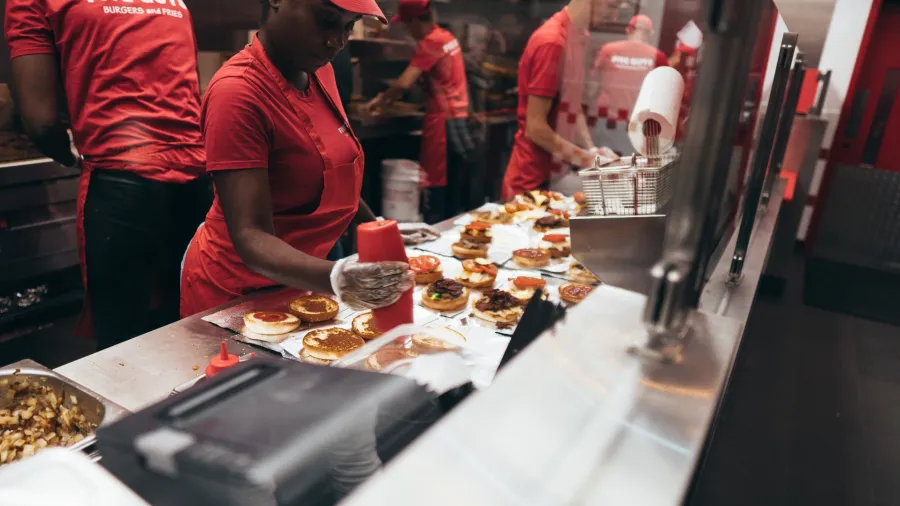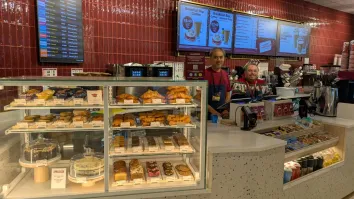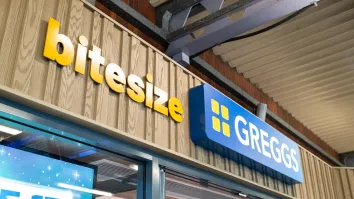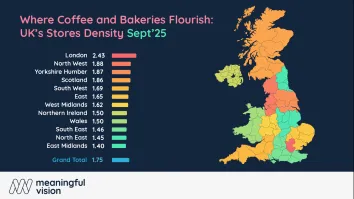
Hospitality closure rates slow amidst easing of cost pressures
One in 40 licensed premises have shut down in the last 12 months
Closures in Britain’s hospitality sector slowed from eight sites a day in 2023 to four a day in the first quarter of 2024, proving that the slight easing of cost pressures may be starting to put the brakes on business closures, a report by CGA by NIQ and AlixPartners revealed.
According to the latest Hospitality Market Monitor, research indicates a 0.4% decline in total numbers between the start of January and the end of March—the third smallest quarter-on-quarter drop since the start of the COVID-19 pandemic.
The current total of 98,745 hospitality venues (pubs, bars, restaurants, hotels and other forms of licensed premises) means the market is down by 2.5% year-on-year, meaning one in 40 venues has shut in the past 12 months.
ALSO READ: Greggs, Costa named amongst UK’s strongest brands
The Hospitality Market Monitor shows positive trends in the eating-out side of the market; food-led site numbers increased by 0.1% in the first quarter of 2024, compared to drops of 0.7% and 0.4% in drink-led and accommodation businesses.
This marginal growth has been driven by a modest revival for casual dining and independent restaurants. These two segments recorded a combined net decline of 21% of sites between the start of the pandemic in March 2020 and December 2023 but appear to have stabilised and achieved 0.5% growth in the first quarter of 2024. Despite improving trends, the independent restaurant segment remains vulnerable, experiencing a 22% decline between March 2020 and December 2023.
Managed multi-site hospitality groups have had a resilient start to 2024, the Monitor reveals. Whilst the independent and leased segments of the market contracted by 0.4% and 0.7% respectively in the first quarter, numbers in the managed channel were virtually level with December 2023. Some groups have been forced to close sites in early 2024, but many vacated premises have been swiftly reoccupied by new operators.
“After a very challenging few years, these numbers give grounds for tentative optimism that hospitality closures will slow as 2024 goes on. Whilst thousands of businesses remain fragile, a downward trend in inflation should hopefully raise the confidence of operators, consumers and investors alike, and protect more venues from closing the doors. It is particularly encouraging to see a marginal return to new openings for both casual dining and independent restaurants, though sustained growth is likely to be some way off,” Karl Chessell, a director at CGA by NIQ said.
Graeme Smith, AlixPartners’ managing director, and head of leisure, corporate finance, said that the economy and the hospitality sector have been impacted by many different and significant factors in the past three years.
“This has been visibly illustrated by hospitality openings and closures. These headline rates have always been among the most meaningful proxy for assessing the overall health of the industry and the operating climate. While the number of venues continues to tick down overall, the rate has slowed significantly, and hopefully this a further sign of the easing of some of these big market pressures. Operating conditions are clearly not easy, but the volatility of recent years has calmed,” Smith said.
“Another key indicator for the hospitality market is M&A activity, which is building momentum, partly on the back of this easing of market pressures, and also as interest rates stabilise and financing markets open up. Debt is available – albeit more expensive than it used to be. As a consequence, we expect these more stable conditions to continue to translate into fewer closures and more M&A deal activity.”
























